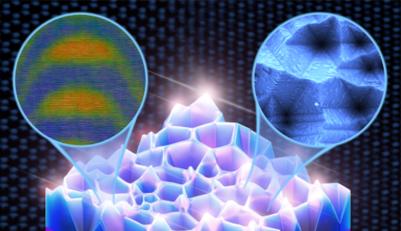An international team of researchers from Singapore, the US and China, led by a team at Singapore-MIT alliance SMART, discovered a new way to generate long-wavelength (red, orange and yellow) emitting quantum dots by taking advantage of intrinsic defects in semiconducting materials.

The researchers fabricate InGaN QDs that feature a significantly higher indium concentration by making use of pre-existing defects in InGaN materials. In this process, the coalescence of so-called V-pits, which result from naturally-existing dislocations in the material, directly forms indium-rich quantum dots, small islands of material that emit longer-wavelength light. Simply put, the material forms itself in a structure that includes small 'pyramids' - the tops of which are actually light-emitting quantum dots.
By growing these structures on conventional silicon substrates, the need for patterning or unconventional substrates is further eliminated. The nucleation of stacking faults, which is also an intrinsic crystal defect, further contributes to emissions of longer wavelengths.
The researchers hope that these new InGaN QDs, could be instrumental in the future development of micro LED arrays consisting of a single material for all colors.